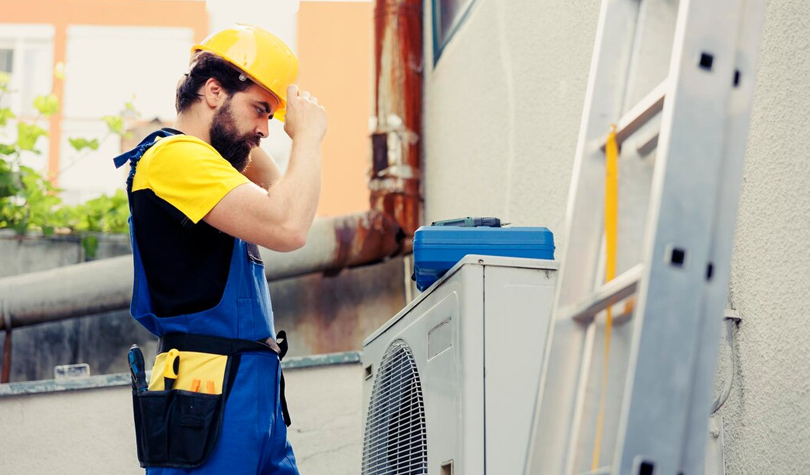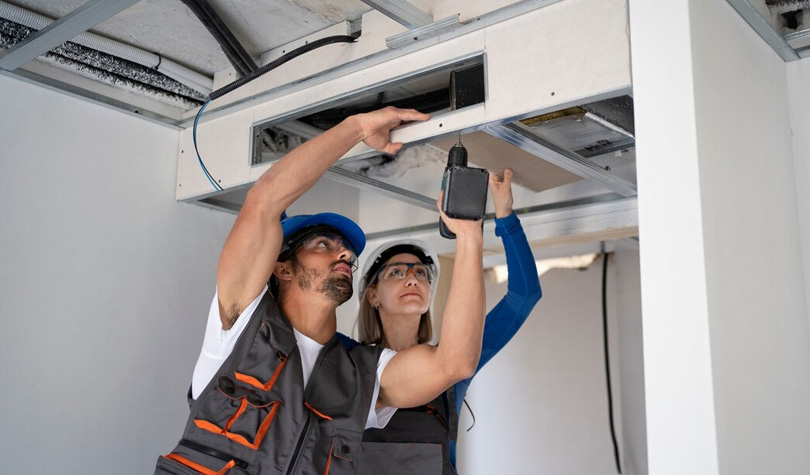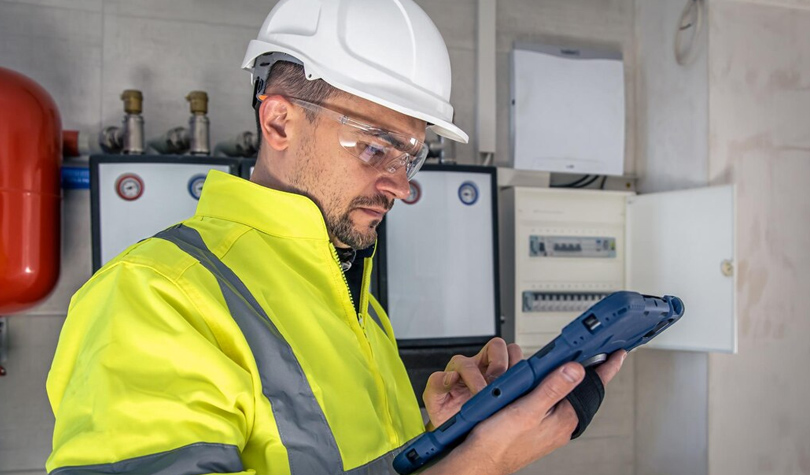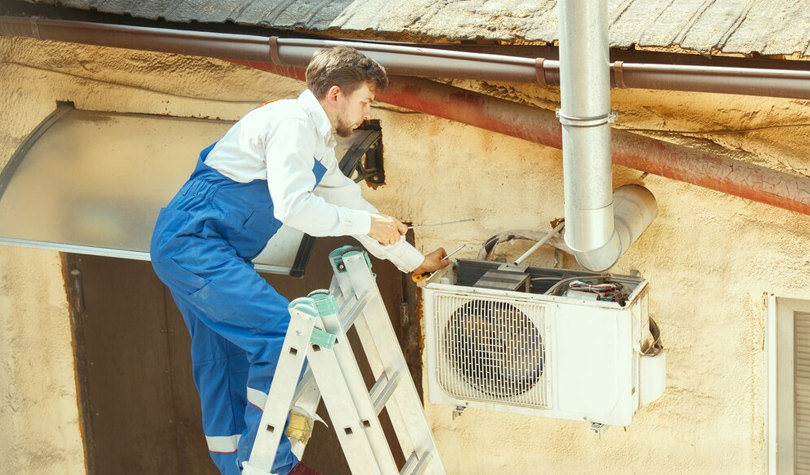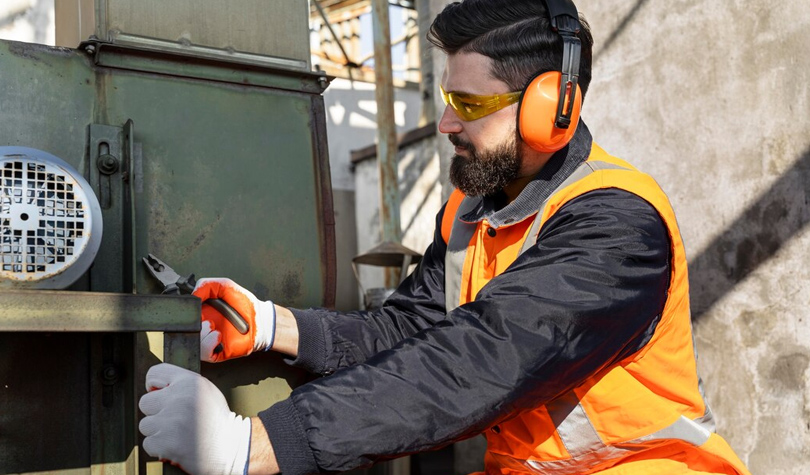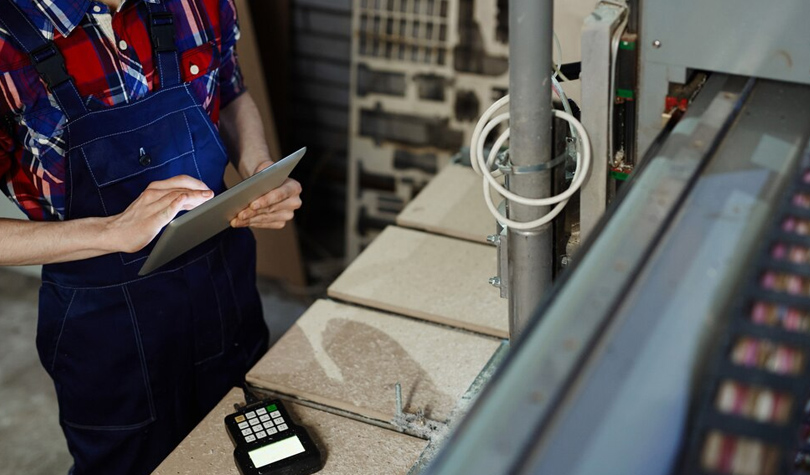With a literal interpretation, HVAC is heating, ventilation, and air conditioning. It is also known as “climate control” because this system regulates the heated and cooled air. HVAC technicians discreetly install the system in residential and commercial buildings. Thus, you may not be aware of the system, but you will feel that the indoor air quality is up to par.
Image Source: freepik.com
Thanks to the wonders of HVAC, you can live, work, eat, and dilly-dally in a well-regulated atmosphere. However, when it comes to maintaining the system, people become idle. HVAC systems start malfunctioning when there is no desired heating or cooling. In such a situation, people realize that the damage is inevitable and call their technicians.
As soon as your technician arrives, here is what will happen:
Understanding the Importance of Regular HVAC Maintenance
After HVAC installation, the process does not come to an end. The maintenance of the HVAC system is highly significant, and only you are supposed to do it. Your technician will stress the very significance of the HVAC system by telling you the reasons behind people’s idleness.
Lack of Awareness
There are 76 million American homes that have central air conditioning equipment. Therefore, the malfunction is imminent, leading to needless disturbance. Many HVAC owners are not versed in the system, thereby not deriving the benefits of HVAC. The unfamiliarity fails to disclose benefits like improved efficiency, lower bills, and longer lifespan.
Lack of Time
Not surprising, eh? The bustling lives of people forbid them to maintain their HVAC systems. Your technician will encourage you to allot time for spot-on HVAC maintenance. You will be in a better position to supervise your system.
Cost Concerns
It is natural to agonize over HVAC costs in terms of maintenance. It ranges from $50 to $150, depending on the service hours. Typically, if there is a one-hour service, it will cost $50. On the other hand, there are yearly contracts costing up to $150.
The Essential Phases
Image Source: freepik.com/freepik
Once you recognize the importance of the HVAC system, it is time to master it! We are not asking you to specialize in the HVAC domain. We are just encouraging you to possess sufficient knowledge regarding the maintenance. This knowledge stems from the basics of sustainability in relation to HVAC.
Let’s dive into the four essential phases of HVAC safekeeping.
Phase 1: Inspection and Assessment
Image Source: freepik.com
The first phase refers to performance evaluation. During this evaluation, you can check your system’s condition and safety of the heating and cooling. Your system contains a lot of complex components that require your attention.
The following are the components:
Air Handler
The air handling unit in your HVAC system is responsible for the indoor part of the air conditioning. It includes the blower, the air filter, and the evaporator coil. Ultimately, the handler disperses the conditioned air throughout the duct system.
How to maintain it?
Inspect the blower, clean the blower, replace the air filter, and determine potential leaks in the evaporator coil.
Duct
The duct is the web of pipes that circulates the conditioned air to different rooms or zones.
How to maintain it?
Investigate thoroughly to identify leaks or gaps. Upon identifying one, seal it. Sometimes, there are unconditioned spaces in the ducts. Insulate or separate them to avoid a collapse. Of course, do not forget to clean it.
Filter
The filter blocks dust and pollen from the air before it enters the air handler.
How to maintain it?
Substitute your filter every one to three months.
Coil
The coil is either the evaporator coil or the condenser coil. The evaporator coil sucks in heat from the indoor air and cools it, while the condenser coil releases heat to the outdoor air and condenses/shrinks the refrigerant.
How to maintain it?
Clean the coil every twelve months and scout out any leaks or erosion.
Compressor
The compressor is the core of the refrigeration cycle, similar to a human’s backbone. It compresses/flattens the refrigerant gas and pumps it to the condenser coil.
How to maintain it?
Test the refrigerant level and pressure. Given that your compressor needs lubrication, go for it.
Fan
There can be two fans: the blower fan and the condenser fan. The blower fan moves the air via the air handler and the duct system. The condenser fan cools the refrigerant in the condenser coil.
How to maintain it?
Clean the fan blades, oversee the fan belt, and smoothen the fan motor.
Sensor
A sensor is a device that measures and watches the temperature. In addition, it measures and watches the humidity, pressure, and air quality.
How to maintain it?
Gauge your sensor on a daily basis, and change it if it is defective.
Thermostat
It is a regulator that starts and stops the conditioned air.
How to maintain it?
Thermostats are generally long-lasting. Buy a new one if it begins to glitch.
Phase 2: Deep Cleaning and Repair
Image Source: freepik.com
Onto the second phase now! After you inspect and assess your HVAC system, you will do deep cleaning and repair. Removing dirt, debris, and various contaminants sets you up for success. Furthermore, a subsequent fix of issues hindering your system’s efficiency is icing on the cake.
Here is how you entirely clean and repair your HVAC system:
Conduct a Complete Scrutiny
The first step is to scrutinize the system from top to bottom. Search for signs of damage, wear and tear, leakage, and corrosion. It includes exploring the electrical mechanisms, the refrigerant lines, the fuel lines, the exhaust outlets, the sensors, the thermostats, and the ducts.
Proceed to Clean the System
The second step is to clean the system from pollutants that may have accumulated over time. Clean the air filters, the coils, the fans, the blowers, the condensers, the evaporators, and the ducts. It will improve the air quality, the airflow, the heat transfer, and the productivity of the system.
Restore the System to Working Order
The third step is to repair the system for snags. Repair or replace damaged, worn, or faulty components, such as the compressors, the motors, the valves, the switches, the belts, the hoses, the pipes, or the wires. Repairing the system restores the function, the reliability, and the safety of the system.
Phase 3: Calibration and Optimization
Image Source: freepik.com
The third phase involves certain adjustments and maximization. These allow you to control parameters that are crucial for HVAC maintenance.
Bear in mind the steps below for calibration and optimization of your HVAC system:
Data Collection
Collect data from the system using various sensors and instruments like temperature, humidity, flow, pressure, air quality, smoke detection, and occupancy sensors. The data should be aggregated and centralized for analysis.
Data Analysis
Employ statistical analysis, regression analysis, artificial neural networks, genetic algorithms, and digital twins. The analysis classifies and quantifies potential errors, deviations, and inefficiencies in the system.
Data Feedback
Provide feedback to the system. Use control devices like thermostats, valves, dampers, fans, and compressors. The feedback recovers the setting of your HVAC system to match the desired standards.
Phase 4: Risk-Based Maintenance
Image Source: freepik.com
It is a maintenance methodology that uses risk assessment principles to optimize maintenance tasks and the allocation of resources. It systematically identifies an asset’s criticality and failure modes to create a maintenance plan that minimizes the “risk of failure.”
This approach will aid you in mitigating the risk associated with your HVAC system. It will detect issues prior to their occurrence. Apart from that, it studies the equipment and confirms if it requires service.
Conclusion
Considering the importance of the HVAC system, we can safely say that the four essential phases of HVAC maintenance are versatile. Mere installation is not enough. You must be steadfast in your attempt to take care of your HVAC system.
There is always a level of personal responsibility. Call your technician and nurture your HVAC system so it operates well.



